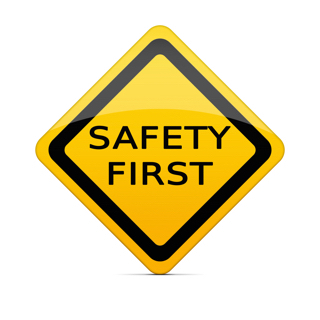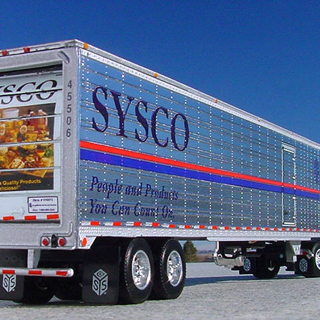Information
-
Associate Name
-
Select date
-
Reason for Observation
-
Department
-
Start Time - Stop Time
Safety
-
Proper pre-trip
-
Keeps all body parts within the equipment
-
Four points of contact with machine
-
Looks in the direction of travel before moving one inch
-
Travels with the base of the machine first
-
Sounds horn and makes eye contact when approaching anyone
-
Uses the S.L.Y. method - Slow down, Lay on the horn and Yield - At doorways, curtains and corners
-
Proper lifting techniques
-
Aware of surroundings at all times
-
Sounds horn and yields while entering the dock area and exiting a trailer
-
Maintains a safe following distance while following other equipment
-
Complete stop before dismounting
-
Three bays away from forklift operator making a drop
-
Does not step on pallets or forks of machine
-
Does not walk in front of moving jack
Receiving Methods
-
Arrives for work on time and dressed in proper clothing for their receiving area.
-
Participates in pre-shift stretch and meetings.
-
Verifies work assignment with supervisor.
-
Obtains RF equipment, signs-in with their unit number, six digit ID number, password and equipment type.
-
Walk to jack, mount and travel to assigned work area
-
Walk to desk for paperwork, or office if it was not pre-opened. This should be done when there is an opportunity in the workflow or when a new load is received.
-
Travels directly to work area, signs on to terminal in work area and enters information for labor management tracking of PO(s) to be received.
-
Obtains shipper information from truck driver or lumper service.
-
Informs driver or lumper of case/pallet handling that needs to be done before the product can be received.
-
Verify trailer is securely locked into the dock lock system.
-
Inspects trailer for damage, odors and cleanliness.
-
Follows temperature requirements per PO instructions. Tail-Middle-Nose
-
Locates TTR if required and verify no alarms. If alarm is present call supervisor immediately and stop the unloading process.
-
Unloads incoming pallets with available equipment - unloading as many pallets as reasonably possible each time equipment is mounted.
-
All damaged product is brought to the attention of a supervisor so a digital picture can be taken. All damage is noted on the required receiving documents and forms.
-
Proceeds through trucks in a first come first served fashion, based on pallet and license plate availability. Exceptions can be made for small deliveries while in the midst of a larger job.
-
Verifies that the product is on good wood and receives product after it has been unloaded, wrapped, unstacked, restacked, and rewrapped (as required).
-
Identifies the product by its manufacturer number or product description and counts the number of pieces of that product.
-
Walks through and inspects unloaded product before receiving it. Product is scanned and instructions or required changes are given to lumper/driver.
-
Scans the pallet label stickers to locate the products pallet label sticker. Once found the receiver checks the quantity listed on the pallet label sticker with the physical count. Checks off the product listing on the "receiving label" document.. Peels label from the backing sheet and places the label under any shrink-wrap on the lower right hand corner of the lower right hand case. For product on large wood and small wood, label is placed on the closed side of the pallet. For front wood product, label is placed on the open side of the pallet.
-
Must scan all pallet tags with the RF.
-
Quantities of all products received must be recorded on the "receiving worksheet" document with the necessary dates and catch weights. Approval from the merchandising department must be obtained before accepting:<br>1. Existing product on the load that is not listing on the "receiving worksheet."<br>2. Excessive overages, or shortages.<br>
-
All quantity exceptions must be listed on a O S & D form.
-
If a pallet or group of pallets has more cases than the pallet label states due to TI HI errors, shipping overages or other errors, receiver must generate and apply the pallet tag(s) necessary. This will include travel or walking to the nearest warehouse printer to obtain the necessary tags. When all is finished, each pallet label should represent the number of cases on each pallet.
-
All dated product must have an expiration or manufacturers date entered (preferably using the RF equipment) as noted on the "receiving worksheet."
-
All catch weight product must have NET weights entered where required (preferably using the RF equipment).
-
When items are not listed on the cases or item numbers on the cases do not match item numbers on the "receiving worksheet",mother receiver may need to open a case to verify the inner product by number or (primarily), by description. If unable to determine or verify product, contact supervisor.
-
A supervisor and or slot coordinator must be promptly notified of:<br>1. All product needing a cube change or product that will not fit into assigned location.<br>2. New or existing product needs slots.<br>3. Damaged product ( a digital picture must be taken for freight claim processing).<br>4. Irregular and unusual occurrences that affect the overall load quality.
-
Before closing the PO, receiver must verify that the number of the pieces/cases received match the number of pieces/cases recorded on the "receiving worksheet" and the bill of lading.
-
Replacements for pallets taken off a load must be loaded back on to the trailer. When finished loading a trailer the receiver retracts the dock plate, closes the trailer door (if roll up type), and closes the dock door, before continuing to the next load or receiving assignment.
-
Fill out each document noting the number of pieces received/refused (kept or returned)/damaged product, date and receivers signature.
-
Fill out the "driver gate pass" for the driver.
-
Take the completed documents and other information and paperwork to the office, including label corrections.
-
If the lumper has not completed stacking cases on pallet, log onto new PO to start paper work. Once previous PO is completed by lumper return to PO finish applying pallet label, paper work, close PO, or any method that is still outstanding to close the order.
-
If not PO available to be unloaded inform supervisor for delay (indirect) time.
-
Receiver takes only the allocated time for breaks and lunches.
-
Inform supervisor of all sanitation problems, spill and other damaged product.
-
Uses safe methods at all times
Picture of Employee Receiving
-
-
Add media
Evaluation
-
Associate exhibited a positive and safe attitude during the observation
-
Comments
-
Employee Signature
-
Supervisor Signature
-








